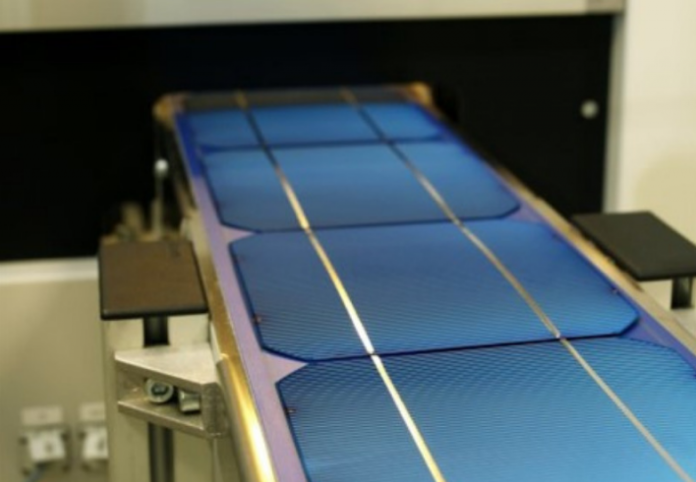Researchers at the ITMO University’s School of Physics and Engineering have developed a paste of titanium dioxide and resonant silicon nanoparticles to maximize perovskite solar cells’ efficiency.
The paste increases the generation of photocurrent in perovskite solar cells, maximizing efficiency.
The researchers said halide perovskite solar cell’s efficiency of over 25% with its low cost makes it one of the most promising devices. They need to improve perovskite solar cells’ charge collection or light absorption by the charge generation layer. However, they would have to introduce other substances or 2D structures into perovskite cells, which is expensive.
The researchers used Mie-resonant silicon nanoparticles, as silicon is one of the most accessible elements in nature. They utilized colloid chemistry methods to develop a silicon-based nanoparticle paste that accurately controls the light scattering inside a perovskite solar cell.
A research associate at ITMO’s School of Physics and Engineering, Aleksandra Furasova, said, “We have improved the titanium paste that is needed to collect electrons in perovskite cells selectively. We add resonant nanoparticles to the electron transport paste in a chosen concentration in the process of solar cell production. This way, the preparation process does not get more complicated, and it helps that silicon particles are cheap too.”
The researchers analyzed the spatial location’s effect of the nanoparticles on the direction of light propagation. They changed their concentration in the paste so that all the incident light focused on the perovskite, affecting the efficiency of converting light into electricity and main photovoltaic parameters.
The researchers identified the optimal nanoparticle concentration using multi-physical calculations. They developed an ideal paste to create the electron transport layer that helped reach maximum efficiency for perovskite solar cells. The multi-physical calculations allowed them to determine the size of and distance between resonant nanoparticles that affect the structure’s optical and electrophysical properties.
Sergey Makarov, a professor at ITMO’s School of Physics and Engineering, said, “In this project, we applied the spin coating method. Meaning that we get thin homogeneous films as liquids deposit on the flat substrates, but other methods can also be used to scale the technology. The resulting paste is a multipurpose product that can be used in the production of other kinds of perovskite solar cells and for photodetectors, and other perovskite-based optoelectronic devices.”
Earlier this year, researchers from the Okinawa Institute of Science and Technology Graduate University demonstrated that creating one of the raw materials necessary for perovskites – a relatively new-to-science material – in a different way could be key to the success of these cells. They synthesized the crystalline powder in perovskites called FAPbI3 using a more precise powder engineering method.
Mercom had earlier reported that a research team at Brown University devised a molecular glue that keeps a key interface inside cells from degrading and improves the long-term reliability of perovskite solar cells.
Nanoparticle Paste to Maximize Perovskite Solar Cells’ Efficiency Developed
The paste increases the generation of photocurrent in a perovskite solar cell
Source:MERCOM
ViaHarsh Shukla






